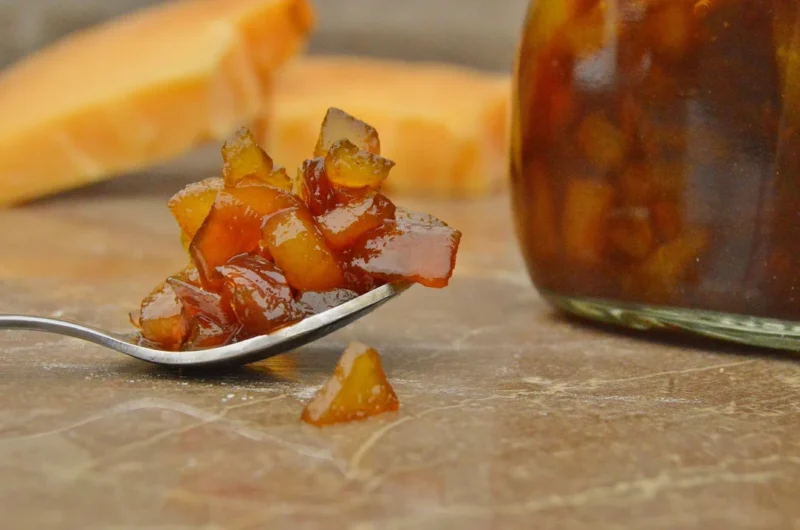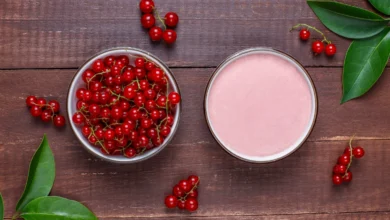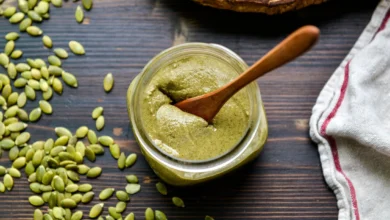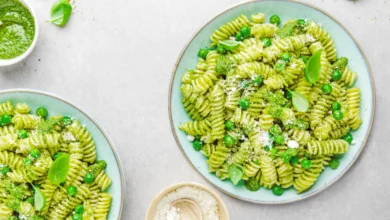Homemade Pear Allspice Chutney for Fall
Autumn is a time to celebrate the richness of the harvest. The colors are vibrant, there’s a crisp hint in the air, and the bounty of fruit is amazing. One of my favorite ways to preserve those flavors is by making homemade chutney. One of my go-to recipes is my Pear Allspice Chutney – it’s the perfect way to bottle up the season!
Contents
Pear Allspice Chutney
There’s something special about blending the sweetness of ripe pears with the warmth of fragrant spices. My Pear Allspice Chutney recipe captures the essence of the season. The changing leaves, the coziness – it’s all in there. It’s a hit every time, whether I serve it alongside roasted meats or simply with a cheese board for wine nights.
And it’s not just about the flavor! I love using beautiful jars for my homemade preserves. Bernardin.ca has a fantastic selection of BPA-free jars in various sizes. They’re perfect for jams, jellies, conserves, syrups, chutneys, sauces, salsas, relishes, pie filling… even pickles and juices! Their website is a treasure trove of ideas, with a whole recipe section and guides to help you plan.
Here’s a little peek at the process for my Pear Allspice Chutney:
- The Fruit: Ripe, juicy pears are the star. Look for varieties that soften when cooked but still hold their shape.
- Spice It Up: Allspice is the obvious namesake, but other warm spices can be added for complexity. Think cinnamon, cloves…be creative!
- Texture: I like a mix of chunky pear pieces and a jam-like consistency.
- The Process: Making chutney is easy and a great way to use up pears that might be past their prime as fresh eating.
Nutritional Information
| Nutrition Facts | Amount (per 10 servings) |
|---|---|
| Servings | 10 |
| Calories | 169 |
| Total Fat (g) | 0.4 |
| Saturated Fat (g) | 0.1 |
| Cholesterol (mg) | 0 |
| Sodium (mg) | 11633 |
| Total Carbohydrate (g) | 43.1 |
| Dietary Fiber (g) | 1.7 |
| Total Sugars (g) | 36.4 |
| Protein (g) | 1.6 |
| Vitamin D (mcg) | 0 |
| Calcium (mg) | 39 |
| Iron (mg) | 1 |
| Potassium (mg) | 253 |
Pear Allspice Chutney Recipe
Course: AppetizersCuisine: American50-60
servings30
minutes45
minutes169
kcal5-6
(250ml) jars2
tablespoons1
hour15
minutesThis delicious Pear Allspice Chutney captures the essence of fall, blending sweet pears, warming spices, and tangy vinegars into a delectable condiment. Perfect for adding a touch of autumn to any meal.
Ingredients
Luscious Peaches: 4.5 cups, peeled and diced
Savory Shallots: 2 ¼ cups, diced
Aromatic Garlic: 1/3 cup, minced
Tangy White Vinegar: 1 cup
Apple Cider Vinegar: 2 ¾ cups for a touch of sweetness
Granulated Sugar: 3 cups
Ground Allspice: ¼ cup for warmth
Salt: 3 tbsp. to balance the flavors
Directions
- Gather Your Supplies: You’ll need six clean 250ml mason jars, a rack for your boiling water canner, plenty of water for the canner, your Bernardin® lids and sealing compound, and of course, your prepared chutney!
- Prep the Fruit and Spices: Peel and dice your peaches, then dice your shallots and mince the garlic. Grind the allspice into a fine powder for the best flavor.
- Combine and Cook: Add all the ingredients to a large pot. Bring the mixture to a simmer over medium heat, stirring frequently. Let the chutney cook and reduce for about 45 minutes, skimming off any foam. It’s ready when everything’s nicely thickened.
- Fill the Jars: Carefully ladle the hot chutney into your preheated jars, leaving about ½ inch of headspace. Use a nonmetallic utensil to release air bubbles and adjust the headspace if needed. Wipe away any food residue from the jar rims.
- Seal for Storage: Place a sealing disc on each jar and secure with a screw band until fingertip tight.
- The Water Bath: Carefully lower your filled jars into the boiling water canner using a rack. Ensure enough water covers the jars by at least 1-2 inches. Follow the processing time specified for your altitude. After processing, turn off the heat, remove the canner lid, and let the jars rest for 5 minutes before lifting them out. Place on a protected surface and leave them undisturbed for 12-24 hours.
- Final Steps: Gently check the seals – the center of the lid should be curved downward. If any jars didn’t seal, you can refrigerate them for immediate use. Labeled and dated, your sealed chutney jars can be stored in a cool, dark place for up to a year. Enjoy the fruits of your home canning efforts!
Notes
- Important Note: Processing times in water bath canning vary depending on your altitude for safety reasons.
- For spicier chutney, add a finely minced hot pepper (jalapeno, serrano, etc.) at the beginning of cooking.
- Customize the fruit! Swap out the peaches for other options like apples, nectarines, or even green mangoes.
- Dried fruits like cranberries or apricots make delicious additions to this chutney.
- Adjust the sweetness level depending on your fruit and personal preference.
Tips
- Let the Flavors Meld: Pear chutney is delicious right away, but the flavors really develop and become more balanced after a week or so of rest. If you can wait, it’s worth it!
- Start with the Right Pears: For the best texture, use firm, slightly underripe pears. If your fruit is super soft, the chutney might turn out a bit mushy. Of course, if you want to use up softer pears, it’ll still taste great!
- Fall Flavor Variations: This time of year is a plethora of amazing produce! Consider adding other autumn favorites to your chutney alongside the pears. Apples would be delicious! If you decide to experiment, keep in mind that adjusting the proportions of fruit might slightly alter how acidic the final chutney is. If in doubt, add a touch more apple cider vinegar to the recipe. You can always taste test to make sure it’s safe for preserving before you start the canning process.
How to Use Chutney
Chutney is so much more than just a side dish! It can add a delicious flavor boost to all sorts of meals and snacks. Here are a few of my favorite ways to use it:
- With Main Dishes: Chutney is a classic accompaniment to curry dishes and roasted or grilled meats. Its sweet, tangy notes perk up everything from chicken to lamb.
- Spice It Up: Add zing to your favorite barbecue sauce with a few tablespoons of spicy chutney. You can also mix a spoonful or two into turkey or chicken salad for a flavor twist.
- Savory Snacks and Spreads: Serve chutney over a block of cream cheese for a flavorful appetizer spread. It also makes a tasty sandwich spread, especially when mixed with a little mayonnaise. Or, top a baked brie appetizer with chutney – it’s the perfect sweet and savory combination!
- Charcuterie Upgrade: Add a small bowl of chutney to your next meat and cheese charcuterie board. It’s a delicious pairing!
Recipe Variations
Spice Adjustment: I’m a fan of spicy food, but this pear chutney is delicious even for milder palates. If you’re feeding a family, you can cut down on the heat by reducing or eliminating the hot chile pepper altogether.
Fruit Swaps: Looking to add a different fruit? Here are some ideas to swap out the peaches:
- Apricots (for a touch of tartness)
- Green mangoes (for a tangy twist)
- Apples (tart or sweet, depending on the variety)
- Nectarines
Texture Note: When swapping fruit, keep in mind that some softer fruits like berries might lose their shape during the cooking down process and become more jam-like. You can still use them, but the texture will be different.
Dried Fruits: The addition of dried fruits like figs, cranberries, or apricots can add another layer of flavor and texture to your chutney. Just be sure to chop them up a bit before adding them to the pot.
RELATED: Grilled Watermelon Salad with Mint and Feta
RELATED: Strawberry and Goat Cheese Phyllo Tarts
How to Store and Freeze
- Refrigerate: Store your opened pear chutney in the refrigerator for up to a month. Be sure to use a clean spoon each time you serve it.
- Freeze: Chutney freezes well for up to six months. While it’s still safe to eat beyond that, the quality might start to decline. Make sure to leave some headspace in your freezer container to allow for expansion.
- Canning for Shelf Storage: To make your pear chutney shelf-stable for longer storage (up to a year) at room temperature, follow proper canning instructions. Ensure you use sterilized jars and follow safe processing times based on your altitude.
Wrapping It Up
Enjoy this delicious Pear Allspice Chutney as a side dish with your favorite meals, a tasty spread for crackers and cheese, or mix it into sauces and dips for a uniquely flavorful twist. Let the flavors of fall linger in your kitchen throughout the season!
_____________________________
Frequently Asked Questions
What is fruit chutney made of?
Fruit chutney is a spicy-sweet-sour condiment. It usually combines fresh or dried fruit, sugar, vinegar, and chiles. Think of combinations like nectarines and dried cherries, blueberries and dried apricots,
What to serve with chutney?
Chutney is so versatile! It’s a fantastic accompaniment to curries, roasted meats, poultry, and baked seafood. You can use it as a sandwich spread, a dip, or incorporate it as an ingredient in meat salads, casseroles, and more. Plus, it’s delicious on a cheese and cracker board.
What are the essential flavor components of an Indian chutney?
If you’ve ever been to an Indian restaurant, you’ve probably tasted some of their classic chutneys. These often feature cilantro, mint, and sometimes tamarind. They’re a key part of chaat, the delicious world of Indian snack foods, and are typically served alongside these.
What are the main ingredients in chutney?
The key to a great chutney lies in slow-cooking. Fruits and/or vegetables are combined with ingredients like peeled ginger, garlic, warming spices like Korintje cinnamon and chilies, plus vinegar and sugar. This slow cooking creates the classic chutney texture and its signature tangy flavor.
What makes chutney thicken?
You can thicken chutney by adding a slurry of flour and spices, ground in with the other spices, and mixed through at the end of the cooking process.
What is chutney called in English?
The word ‘chutney’ itself is English! But with origins in India, it can sometimes be called ‘pickle’ in British English, given the similarities in preserving ingredients with vinegar and spices. Mango chutney is the most common and well-known type.
Are chutneys healthy?
Chutneys are rich in vitamins and fibers that are beneficial to our needs. Chutneys often feature coriander, which is known for its numerous nutrients, and its ability to help ease bloating and discomfort and boost appetite. Enjoy in moderation as part of a balanced diet!






